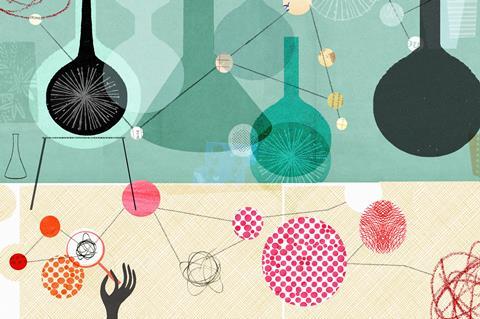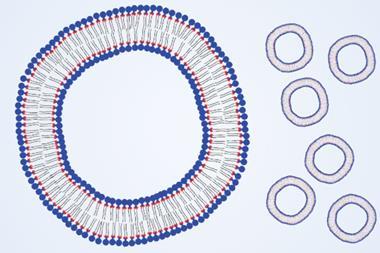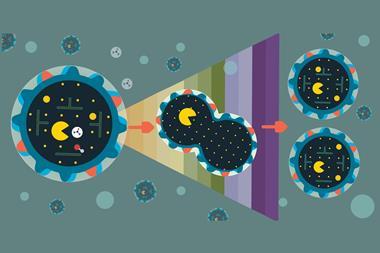Boundaries encourage complex chemistry, but originality is important too

Life is the ultimate showcase for what complex chemical systems can create. And many chemists have been inspired to try copying some of life’s essential tricks such as metabolism, self-replication and compartmentalisation. Research we highlighted at the end of July ticked the first two of those three boxes.
What this system is missing, however, is a boundary. Of course, defining exactly what counts as a living system is a contentious issue – as Phil Ball explored a few weeks ago. Nevertheless, why does encapsulation at least appear to be crucial for life? Having a system that can capture and use energy to make more of itself is all very well, but keeping things separate allows a plethora of reactions to all happen independently, simultaneously, repeatedly and in close proximity. It also protects the system from parasites. Maintaining precise molecular gradients within a compartment drives the reaction networks within them. Compartments elevate complexity.
Chemistry has almost exclusively been concerned with pure compounds so it’s exciting to see the rise of systems chemistry and the way some chemists are embracing complexity rather than attempting to eliminate it. As a field, systems chemistry is still in the process of defining itself. Born from origin-of-life research this emerging field is all about emergent properties – where a system has characteristics that its individual components do not.
For systems chemistry to grow and mature, analytical and computational chemistry will need to evolve alongside it to better investigate processes as a whole, rather than their individual components. There is also work to be done to ensure experiments that explore systems chemistry are reproducible. This will be especially tricky when exploring systems that are out of equilibrium – it’s becoming increasingly clear that this is where we’ll find the functional potential of complex chemical systems.
While living systems have inspired our search for systems chemistry, let’s not limit ourselves to just playing a cellular imitation game. Complex chemical systems need not include any biomolecules at all. And the possibilities are endless should scientists become adept at building systems that can self-assemble, produce and consume energy, process information, manufacture materials and replicate.
Research that attempts to satisfy our innate curiosities about how inanimate objects became living matter is definitely worthy. But creating complex chemical systems is about more than answering questions about our past – let’s get creative about how they can enhance our future.












No comments yet